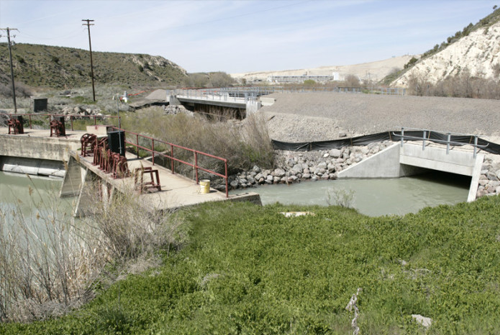
The East Jordan Canal began as a private irrigation company. Coming off the Jordan River approximately 1.5 miles downstream from the Jordan and Salt Lake Canal, the canal follows a higher contour, enabling it to reach farms farther east in Salt Lake Valley. Realizing it needed a second canal to make exchange agreements with irrigators, Salt Lake City began buying stock in the East Jordan Canal Company, owning 20 percent by 1905. Eventually, the city had to condemn its way into the canal in order to gain access.
Originally, the East Jordan Canal ended at 7000 South and 9th East, essentially dumping into Little Cottonwood Creek. The city built the East Jordan Extension to convey water to Big Cottonwood Creek. By widening and improving the canal, the city added another 150 cfs, up from original 220 cfs. The Department of Public Utilities built a pump station at 6200 South near Highland Drive in 1924. That enabled the department to move Utah Lake and Jordan River water to the upper benches, where it could be used to enter exchange agreements with irrigators using Big Cottonwood Creek and Mill Creek whose farms were too high in the valley to receive water from the Jordan and Salt Lake Canal.
The pumps begin moving water uphill through a 30" pipe in mid-July to the Upper Canal at the Old Mill Corporate Center, when flow in Big Cottonwood Creek is typically too low to supply water to the Big Cottonwood Water Treatment Plant and meet exchange agreements with irrigators. The East Jordan Canal still supplies water to shareholders in Draper and Sandy, besides additionally serving the Green Ditch irrigation system and the upper elevation irrigators — Big Ditch, Hill Ditch and Lower Canal — who can take their exchange water as it moves down Big Cottonwood Creek.
 View East Jordan Canal Gallery
View East Jordan Canal Gallery
